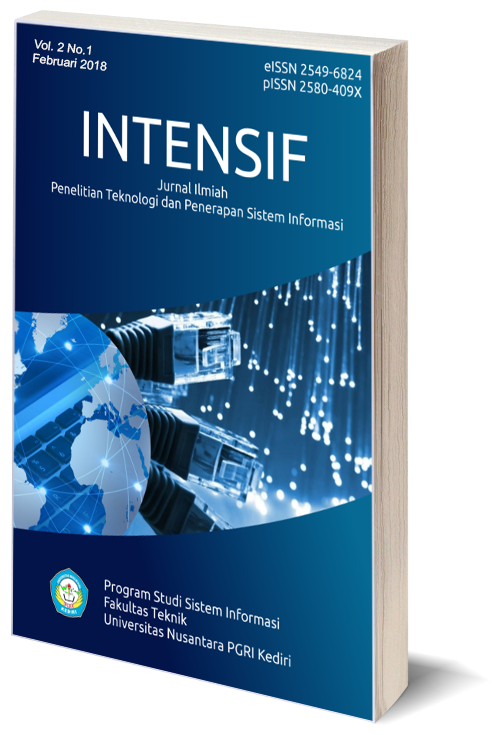Analisis Tingkat Keamanan Sistem Informasi Akademik Berdasarkan Standard ISO/IEC 27002:2013 Menggunakan SSE-CMM
DOI:
https://doi.org/10.29407/intensif.v2i1.11830Keywords:
Academic Information Security, Security System, Maturity Level, SSE-CMMAbstract
The objective of this research is to find out the level of information security in the academic information system to give recommendations improvements in information security management. The method used is qualitative research method, which data obtained based on the results of questionnaires distributed to respondents with the Guttmann scale. Based on the analysis results, 13 objective controls and 43 security controls were scattered in 3 clauses. From the analysis, it was concluded that the maturity level of information system security governance was 2.51, which means the level of maturity is still at level 2 but is approaching level 3 well defined.
Downloads
References
Imam Riadi, Jazi Eko Istiyanto, Ahmad Ashari and Subanar, “Internet Forensics Framework Based-on Clustering” International Journal of Advanced Computer Science and Applications(IJACSA), 4(12), 2013. <br>
Elachgar, H., Boulafdour, B., Makoudi, M., & Regragui, B. Information security, 4TH wave. 2012 <br>
Tractenberg, R. E., Yumoto, F., Aisen, P. S., Kaye, J. A., & Mislevy, R. J. (2012). Using the Guttman scale to define and estimate measurement error in items over time: The case of cognitive decline and the meaning of “points lost.” PLoS ONE, 7(2).2012 <br>
Luhua, Z. (2012). Analysis of software capability maturity model (CMM). In Proceedings of the 2012 National Conference on Information Technology and Computer Science, CITCS 2012 (pp. 830–833) </p>
Downloads
Published
Issue
Section
License
Authors who publish with this journal agree to the following terms:
- Copyright on any article is retained by the author(s).
- The author grants the journal, the right of first publication with the work simultaneously licensed under a Creative Commons Attribution License that allows others to share the work with an acknowledgment of the work’s authorship and initial publication in this journal.
- Authors are able to enter into separate, additional contractual arrangements for the non-exclusive distribution of the journal’s published version of the work (e.g., post it to an institutional repository or publish it in a book), with an acknowledgment of its initial publication in this journal.
- Authors are permitted and encouraged to post their work online (e.g., in institutional repositories or on their website) prior to and during the submission process, as it can lead to productive exchanges, as well as earlier and greater citation of published work.
- The article and any associated published material is distributed under the Creative Commons Attribution-ShareAlike 4.0 International License












